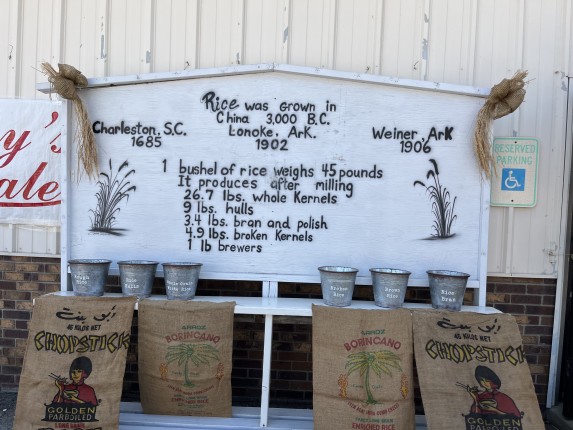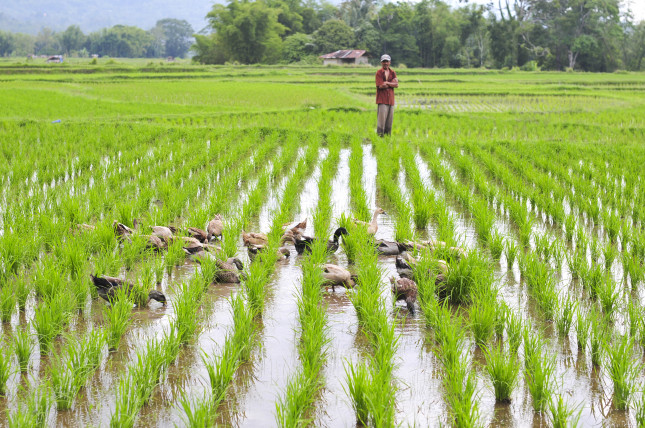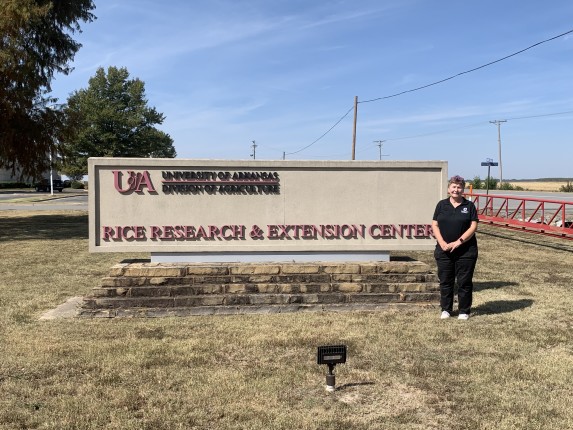-
Rice: A Recipe for Greenhouse Gas Emissions in the U. S. and China?
January 17, 2023 By Karen ManclGo to the Arkansas Rice Festival in Wiener, Arkansas and you will discover how delicious – and diversely flavored – this cereal grain can be. Savory, sweet, or even spicy: Each dish at the festival’s annual rice recipe contest shows the many ways to prepare this international food staple.
Why look to Arkansas for rice? The state produces 4 million tons of it every year, which is nearly half the rice grown in the United States. But that U.S. annual total is dwarfed by the amount produced by China, which at 207 million tons is the world’s largest rice producer. It’s also natural that the world looks to China for rice; genomic mapping has suggested that cultivated rice was first grown in the Pearl River valley in southern China.
In the developing world, rice is the most important crop, providing food for half the world’s population. One-fifth of the people on the planet draw their livelihood from rice production. Yet, sadly, rice also is a major greenhouse gas emitting crop.
The numbers are sobering. Rice cultivation contributes 2.5 percent of human-induced greenhouse gases. Two particular gases are the culprits. One is methane, a short-lived greenhouse gas that is 25 to 80 times more impactful than CO2. Rice contributes 12 percent of total global methane emissions. Nitrous oxide (N2O) is the other contribution. It is a long-lived greenhouse gas emitted by rice and is 300 times more potent than CO2.
Agriculture is the world’s major N2O source and researchers are just starting to measure the emissions produced by rice fields. Yet because of their key research and production roles in global rice supply, the United States and China could help to drive changes that would reduce this sticky greenhouse gas problem by assisting and incentivizing farmers to change the recipe for growing rice.
The Right Ingredients for Growing Rice
The large expanse of flat land and adequate water supply in Arkansas’s Mississippi River Delta make it an ideal place to grow rice. Ken Graves, a rice farmer and chairman of the Arkansas Rice Growers Association, laid out the annual preparations to do so: fields are surveyed, levees are built to form paddies, and seeds are planted before flooding.
Rice requires a lot of water to germinate and grow. But Ken and all rice farmers must then provide the second major ingredient: nitrogen. In Arkansas, urea fertilizer is often spread by airplanes that make low passes over the flooded fields. These same steps are practiced by large and small farmers worldwide. Flooded paddies provide the thirsty rice with water and nitrogen is applied to maximize yields. However, this also can be the very recipe that produces methane and nitrous oxide.
In Chinese, the word for methane zhaoqi (沼气) means swamp gas. In flooded rice paddies, as plant roots, stems, and leaves start to decompose and find no air in the soil, methane is emitted. Any excess nitrogen in the process is converted from a fertilizer in wet soil into nitrous oxide gas by microbes.
Just as a careful cook will adjust cooking times, ingredients, and even temperature, farmers also can adjust the way they grow rice to maintain healthy plants while limiting greenhouse gas emissions. Yet helping farmers transition from generations of growing rice in a long-established way to a new method of cultivation will require research, training, and incentives.
Changing the Recipe Can Reduce Emissions
Water shortages in northern China are driving the development of water-saving rice production called alternate wetting and drying (AWD). AWD starts when farmers flood a rice field and allow the water to evaporate and expose the soil in mid-season before flooding it again. Since oxygen in the air is toxic to the microbes that produce methane, exposing the soil allows oxygen in the air to penetrate the soil. This stops the production of methane for months, even after the soil is flooded again.
The AWD process can almost completely eliminate methane emissions. Unfortunately, the dry soil promotes nitrogen transformation, which both reduces fertilizer value and creates even more nitrous oxide. Nitrous oxide emissions from intermittently flooded fields can be 30 to 45 times higher, so AWD alone may not reduce greenhouse gas emissions from rice.
Improved management of nitrogen fertilizers and water also is needed to reduce emissions of nitrous oxide. Rice is hungry for nitrogen and most of the fertilizer that provides it is applied at the beginning of the season just before the fields are flooded. Because a lack of nitrogen reduced yield in older rice varieties, farmers learned to apply extra nitrogen during the growing season. These old fertilizer application practices still persist, says Jarrod Hardke, University of Arkansas Extension Rice Specialist. Yet recent research shows that new rice hybrids grow well with less nitrogen. Fertilizer recommendations must use this new knowledge to strike a balance and become economically, environmentally, and agronomically sound.
Growing rice in rows rather than in paddies also changes greenhouse gas emissions. Farmers prepare fields in rows with furrows, and then spread the rice seeds and fertilizer before flooding them. Row rice has the advantages of less labor and uses less water, but requires 25 percent more nitrogen fertilizer. In studying emissions from row rice fields, researchers with the USDA Delta Water Management Research Unit in Arkansas found a 93 percent reduction in methane emission in row rice, but the impact was canceled out by a 98 percent increase in nitrous oxide emissions.
In China, the ground cover rice production system provides a new way to save water, especially growing rice in the north. In this process, rice paddy soils are covered with agricultural plastic films at the beginning of the growing season. Early research is promising, and shows that this approach uses 64 percent less water and emits 54 percent less methane and nitrous oxide.
Research and practice suggest that emerging rice growing methods can greatly reduce methane and nitrous oxide emissions. Yet more study and customized farmer training programs will be needed to reduce emissions of both greenhouse gasses.
On the Climate Action Menu
Solving this wicked problem – where reducing one greenhouse gas increases the emissions of the other – requires a systematic approach to rice production. Carefully constructed government policies can help farmers adjust the way they grow rice to reduce greenhouse gas emissions.
In 2017, a few U.S. rice farmers were the first to sell carbon credits by implementing conservation practices to reduce methane emissions. The USDA Natural Resources Conservation Service invested $22.6 million in Conservation Innovation Grants to support these cutting-edge projects. The newest U.S. Nationally Determined Contributions (NDC) targets included support for climate-smart agricultural practices. The USDA announced the $2.8 billion Climate Smart Commodities Program to create market opportunities. Seventy projects were funded in September 2022, including a $7.5 million rice project.
Almost half of the countries negotiating at the Madrid United Nations Framework Convention on Climate Charge included rice management in their NDCs. Sadly, as the world’s largest rice producer, China placed only one small paragraph in its NDCs on agriculture, and the word “rice” does not appear in it.
China is only starting to look to agriculture to curb emissions. Self-sufficiency in food security and rural poverty alleviation are driving its current policy, making it difficult to promote green agricultural approaches that might lower yields. Both the United States and China have the agricultural research capacity to perfect the recipe for growing rice to lower greenhouse gas emissions. Working together, the two countries could solve this immense challenge.
 A Publication of the Stimson Center.
A Publication of the Stimson Center.






